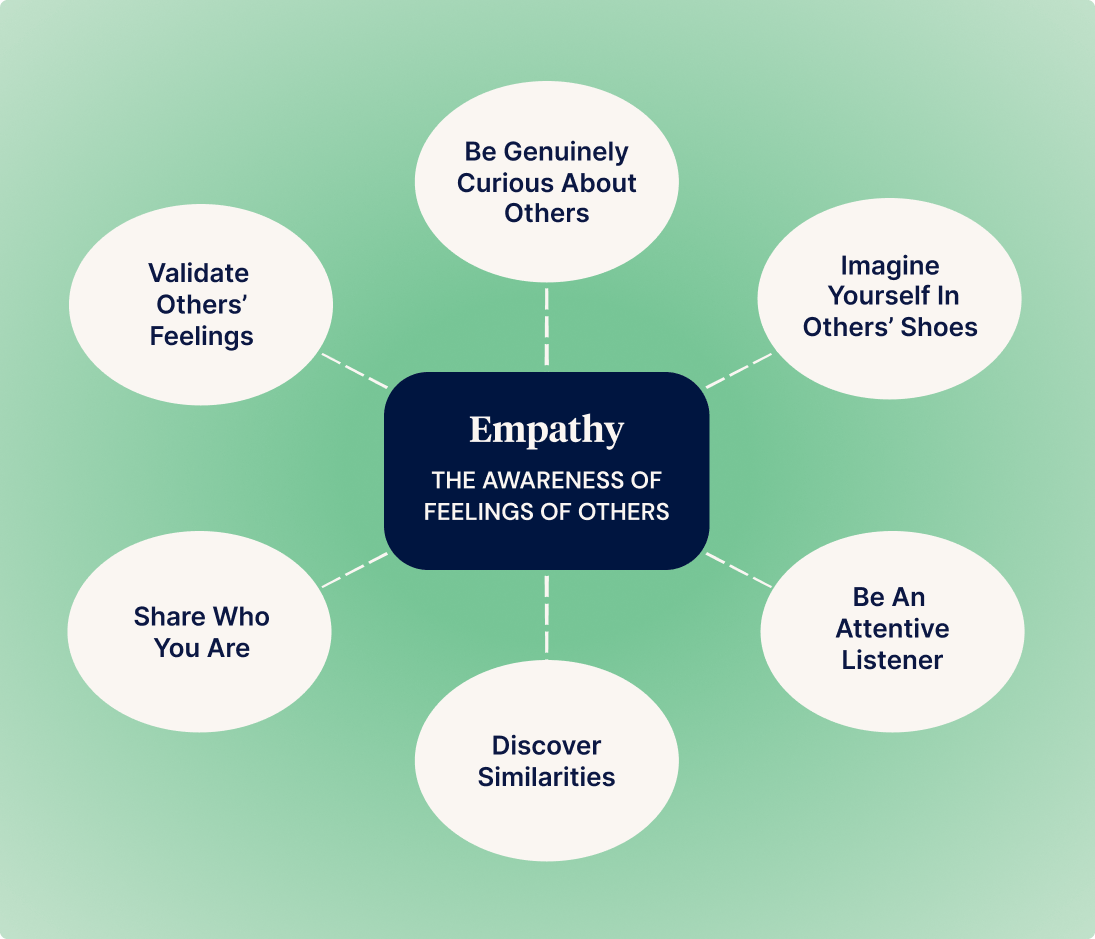What Does Empathy Mean?
In a recent piece on Building a Resilient Workforce, I challenged textbook definitions. This time, empathy is in the spotlight.
Oxford Learner’s Dictionary defines empathy as “the ability to understand and share the feelings of another”. But can we share someone else’s feelings if we haven’t lived their experience? Even if we’ve been through something similar, we’re still different people with unique reactions.
So instead, I prefer this:
“Empathy is imagining yourself in someone else’s shoes.”
Empathy is often framed in healthcare as a skill for patient care. But really, empathy is for all relationships, including leadership. If you're human, you're vulnerable. And with vulnerability comes a need for care and connection.
Let’s explore how empathy and leadership can walk hand-in-hand, even amid operational pressures.
The Foundations of Empathetic Leadership
The diagram below, by Prudence Pitter, a Chief Human Resources Officer and global keynote speaker, outlines five practices of empathetic leadership, with “awareness of others' feelings” at its core.

I’m breaking them down in practical terms:
1. Be Genuinely Curious About Others
In therapy, curiosity builds rapport. Leaders can adopt the same mindset.
Yes, we all judge. It’s hardwired. A Princeton study showed we form impressions in just one-tenth of a second. The trick isn’t to stop judging, it’s to stay curious despite it.
Try this approach:
- Ask questions that invite stories.
- Say, “I’m curious about…” instead of assuming.
- Remember: curiosity shows you’re present and open to learning, not an expert on someone else’s story.
2. Imagine Yourself in Someone Else’s Shoes
Hierarchy exists. Empathy helps level the field.
Brené Brown draws a powerful distinction: sympathy looks down; empathy leans in. Empathy asks us to feel with someone, which is an emotionally vulnerable act. It means connecting with a feeling we’ve had before, even if the situation is different.
But empathy also takes energy.
You give a piece of yourself, so you need to refill your tank regularly:
- For one person, it’s rom-coms. For another, it’s true crime.
- Some play pool with mates; some nap.
- Whatever it is, work on our self-care rituals.
And remember: every supervisor needs their supervisor.
3. Be an Active Listener
The golden rule in therapy is: you talk 30% and listen 70%.
In leadership, it’s easy to fall into “problem-solver” mode. But sometimes, people don’t want solutions, they just want to be heard.
“Moments of silence may feel counterintuitive, but they give the other person a chance to reflect and process.”
A GP once told me: “Let them finish. If you interrupt, they’ll start over from the beginning.” Wise words.
Try this:
- Create predictable opportunities for people to speak (e.g., open office hours on Mondays from 2 to 5 p.m.).
- Ask for an agenda before a chat (beneficial for the “chatty catties”).
- Set time limits respectfully.
- Offer clear referral pathways for discussions outside your scope.
As Clinical Nurse Consultants at a youth recovery home, I invited feedback from clients and families. Parents felt out of the loop, so we created fortnightly progress meetings and weekly phone call slots. Even when we didn’t connect, they appreciated the effort, we’d thought of them.
4. Discover Similarities
We’re all different, but we’re all doing the work.
Even a tiny shared moment, like a compliment from a stranger, can feel meaningful. In leadership, relatability builds rapport, and rapport builds respect.
“People in leadership often think they need to be on a separate page to be taken seriously. But when someone is relatable, that’s what earns trust.”
Find the overlap:
- Same job? Shared purpose.
- Same show? Shared laugh.
- Same struggle? Shared understanding.
Even the smallest commonality can connect people.
5. Share Who You Are
Professionalism doesn’t mean impersonality.
Yes, boundaries matter. But being yourself at work makes others feel they can be themselves too.
In my practice:
I work from home. It’s hot. I don’t wear shoes. That wouldn’t fly in a hospital, but in my safe space, it works, and clients feel more at ease too.
At uni:
I once nervously met with a course convenor I thought was intimidating. I accidentally asked if she’d just been married (her surname had changed). She replied, “Actually, I just got divorced.” I apologised and then asked how she was doing. That moment shifted everything. She opened up. She supported me. She even gave me a book that helped her through hard times.
Contrast that with:
A psychologist I once saw was helpful, but shared nothing about herself. She had two cats because they’d walk through the video screen. That’s it. Eventually, I stopped opening up. I didn’t feel trusted, so that I couldn’t trust her either.
“If someone shares nothing, I feel beneath them.”
Of course, don’t overshare or give emotional work to others. Here’s my filter:
- Would I be okay if everyone at work heard this?
- Does this story offer a connection without a burden?
Being human, not robotic, is what makes professional relationships work.
6. Validate Others’ Feelings
You won’t consistently deliver the outcome someone wants. But you can validate their feelings.
“I appreciate this isn’t the outcome you were hoping for.”
Simple validation shows:
- You heard them.
- Their feelings matter, even if the decision stands.
Caution: Avoid saying “I understand.”
A friend of mine lost her dad. She told me, “Even if your dad died the same way, you don’t know how I feel.” I’ve carried that with me.
Instead, try:
- “I can only imagine what you’re feeling.”
- “I appreciate how hard this is.”
- “I don’t know what to say, but I’m here.”
Honesty and pause go a long way.
Why Empathy is Worth It
It takes courage to lead. And even more courage to lead with empathy.
Empathy helps us feel seen and heard. It creates trust. And trust makes workplaces effective, not just functional.
So next time you find yourself pulled between care and responsibility, remember:
Empathy isn’t soft. It’s strong, intentional, and the thread that weaves healthy workplaces together.



